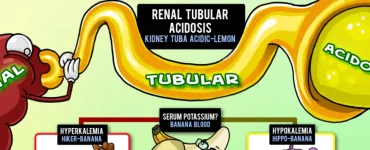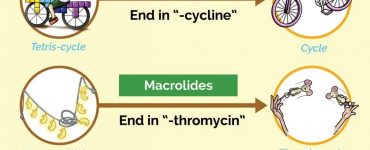A picture is worth a thousand words never rang truer than for studies on how human memory functions. Many theories show the superiority of pictures over words in relation to information retention. If learning and remembering complex information while studying for the USMLE is important to you, read the following.
Dual-coding Theory
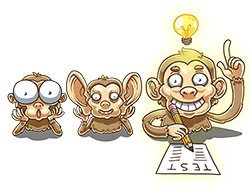 Allan Paivio’s dual-coding cognitive theory states that the creation of mental images enhances learning. Paivio infers that learners could expand on learned material by creating verbal associations or visual imagery. Thus, a concept is stored in the brain via two pathways, one for the verbal representation of the word and one for the mental image.
Allan Paivio’s dual-coding cognitive theory states that the creation of mental images enhances learning. Paivio infers that learners could expand on learned material by creating verbal associations or visual imagery. Thus, a concept is stored in the brain via two pathways, one for the verbal representation of the word and one for the mental image.
For medical students, they may remember a right ventricle based on both the sound of the two words, and on the mental image of the first time they ever saw a right ventricle in real life. The words “right ventricle” are thus dual coded. That med student may retrieve the item from his or her memory by associating it either with the sound of the word or the image of the actual ventricle or both.
Picture Superiority Effect
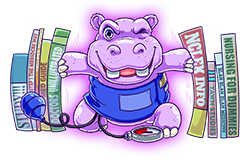 If associations between a word and an image are not available, such as when you are recalling a person whose name you have heard but whose face you have never seen, it is far more challenging to recall the word. This is a result of picture superiority effect, which simply states the person who learns a concept by viewing pictures of it will recall that concept with better accuracy and ease than the person who simply learned a name.
If associations between a word and an image are not available, such as when you are recalling a person whose name you have heard but whose face you have never seen, it is far more challenging to recall the word. This is a result of picture superiority effect, which simply states the person who learns a concept by viewing pictures of it will recall that concept with better accuracy and ease than the person who simply learned a name.
This also explains why concrete concepts are easier to remember than abstract. People have a mental image for the concrete concept of an apple, but it is difficult to have a concrete image for an abstract idea like selflessness. Similarly, one might think a complex medical condition – e.g. pulmonary valve stenosis – and its causes, symptoms and treatments would be nearly impossible to depict in retainable imagery.
And it was, prior to Picmonic.
In Practice
This is where Picmonic’s learning system reveals its value to medical students, who obviously need to remember all conditions, diseases and disorders associated with the right ventricle, not simply be able to recognize the organ.
Picmonic turns medical conditions – as well as their mechanism of action, indications, side effects, treatment and more – into unforgettable graphics paired with verbal and written descriptions. In a Picmonic card, an image is created for an entire set of related information. Quite literally, if someone asks a Picmonic user about pulmonary valve stenosis, he or she actually has memorable visuals from which to draw information about the congenital defect.
The Von Restorff Effect
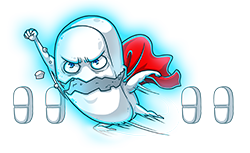 The human memory has a special place for the bizarre. In fact, the more unusual, humorous, eccentric or noticeably individualistic any bit of data may be, the better chance the brain has of recalling it, according to the Von Restorff effect, named after psychiatrist and children’s pediatrician Hedwig von Restorff.
The human memory has a special place for the bizarre. In fact, the more unusual, humorous, eccentric or noticeably individualistic any bit of data may be, the better chance the brain has of recalling it, according to the Von Restorff effect, named after psychiatrist and children’s pediatrician Hedwig von Restorff.
Simply stated, the more distinctive something is or the more it “stands out like a sore thumb,” the more retainable and/or accessible it is in the memory.
This effect has been illustrated in children since they could crawl – from the Sesame Street songs of “one of these things is not like the others” to early Apple commercials with the iconic white logo on neon backdrops. Our brains are programmed to notice that which does not blend in.
In Practice
Many students already implement the Von Restorff effect, also known as the isolation effect, in their study habits. Take, for example, highlighting lines in a textbook. This technique is the perfect example of the Von Restorff effect.
This effect also explains why grotesque, challenging or traumatic patient experiences may naturally surface in the minds of medical professionals who’ve witnessed countless symptoms, typical conditions, sat through hours of lectures and filled the archives of their memory with medical factoids.
Harnessing the Power of Picmonic to Crush USMLE Studying
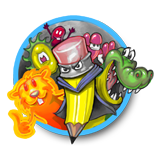 Picmonic harnesses the power of the Von Restorff effect in every USMLE Step 1 study slide. Humorous and irregular characters like the Pencil Villain (penicillin) stamp their mnemonic footprints on med students’ memories. Rather than relying on rote memorization of a sea of black and white copy, Picmonic users’ minds are flooded with images so abnormal they are unforgettable.
Picmonic harnesses the power of the Von Restorff effect in every USMLE Step 1 study slide. Humorous and irregular characters like the Pencil Villain (penicillin) stamp their mnemonic footprints on med students’ memories. Rather than relying on rote memorization of a sea of black and white copy, Picmonic users’ minds are flooded with images so abnormal they are unforgettable.
Thus, based on dual-coding theory, the picture superiority effect and the Von Restorff effect, Picmonic users are clearly far more likely to recall the information they need, first to pass USMLE Step 1 and then to save lives in their profession.
Try Picmonic for free, and give your brain the tools it needs to pull extraordinary Step 1 scores.

